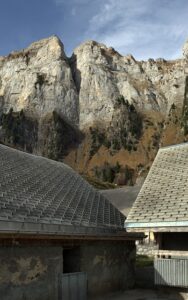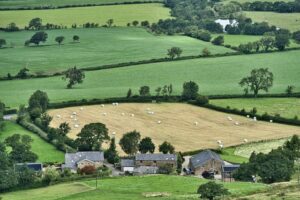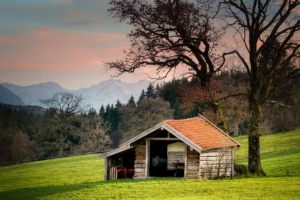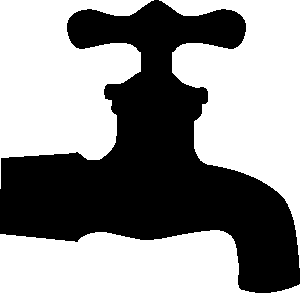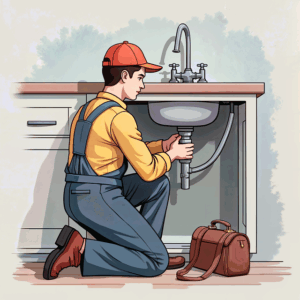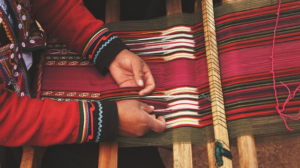Optimizing Farm Sheds for Central Tablelands Agriculture: Design, Material, and Innovation Keywords
In the Central Tablelands of New South Wales, farm sheds are essential for safeguarding agricultural operations against the region's variable weather and supporting sustainable farming practices. These structures are built to be durable, w…….
In the Central Tablelands of New South Wales, farm sheds are essential for safeguarding agricultural operations against the region's variable weather and supporting sustainable farming practices. These structures are built to be durable, with materials like galvanized or Colorbond steel providing resilience against harsh conditions. Design elements focus on climate-adaptive features, such as ventilation and insulation, to protect crops and equipment while conserving energy. The strategic placement and layout of farm sheds enhance workflow efficiency and space utilization, with features like roller doors, natural lighting, and adaptable storage solutions. Modern advancements include smart monitoring systems for precision farming and the integration of solar panels, promoting both productivity and sustainability. Farmers in this region invest in high-quality farm sheds to ensure long-term success and adaptability to changing market demands and environmental challenges.
Agricultural sheds play a pivotal role in safeguarding crops and equipment while facilitating streamlined agricultural operations in the Central Tablelands, an area renowned for its fertile land and robust farming industry. This article delves into the essential aspects of designing and constructing farm sheds that cater to the specific climatic conditions and diverse agricultural activities in this region. We explore material selection for long-term sustainability, innovations in shed design, and technologies that enhance efficiency. By examining each facet, from foundational design considerations to state-of-the-art features, this piece aims to guide Central Tablelands farmers in selecting the most suitable farm sheds to bolster their operations. Farm Sheds remain a cornerstone of modern farming practices, and understanding their role is key to leveraging their benefits effectively.
- Understanding the Role of Farm Sheds in Central Tablelands Agriculture
- Design Considerations for Efficient and Durable Farm Sheds
- Types of Farm Sheds Suitable for Central Tablelands Farms
- Material Selection: Ensuring Long-Term Sustainability for Farm Sheds
- Innovative Features and Technologies in Modern Farm Sheds Benefiting Central Tablelands Operations
Understanding the Role of Farm Sheds in Central Tablelands Agriculture

In the Central Tablelands of New South Wales, Australia, farm sheds play a pivotal role in the agricultural landscape. These structures are integral to the operations of local farms, providing essential shelter for machinery, livestock, and crops. The region’s variable climate necessitates robust storage solutions to protect harvested grains from weather extremes, which can range from drought to heavy rainfall. Farm sheds are designed to withstand these conditions, ensuring the longevity and quality of stored produce. Moreover, these sheds serve as multifunctional spaces where farmers can perform maintenance on equipment, carry out livestock management tasks, and even host agricultural events or workshops.
The Central Tablelands’ fertile soils and favorable altitude make it a hub for diverse farming activities, including cropping, viticulture, and horticulture. Farm sheds are strategically positioned on these farms to optimize the utilization of space and resources, facilitating efficient workflow and productivity. The design and material choice of farm sheds in this region often reflect sustainable practices, with many incorporating energy-efficient features or using recycled materials. This not only contributes to the environmental sustainability of farming practices but also aligns with the growing market demand for eco-friendly agricultural production. Farmers in the Central Tablelands recognize that investing in well-designed and durable farm sheds is a sound strategy for enhancing their overall farm productivity and profitability.
Design Considerations for Efficient and Durable Farm Sheds

In designing efficient and durable farm sheds for the Central Tablelands region, it’s crucial to consider local climate conditions, material selection, and the specific needs of the farming operations. The sheds must withstand the harsh weather patterns characteristic of this area, including high winds, intense sun exposure, and a wide range of temperatures. Utilizing materials like galvanized steel or Colorbond steel ensures longevity and resistance to corrosion from humid conditions. Designing with ample ventilation and insulation not only protects crops and equipment but also contributes to energy efficiency, reducing the farm’s overall operational costs.
The layout of the shed should be planned meticulously to facilitate seamless workflow and maximize space utilization. Features such as roller doors or wide access points for heavy machinery are essential. Additionally, incorporating design elements that allow for natural light, while still providing shade, can enhance working conditions and reduce energy consumption. Smart design also includes considerations for maintenance access, storage solutions, and potential future expansion. By addressing these factors, farm sheds in the Central Tablelands can be optimized to support productive and sustainable farming practices over the long term.
Types of Farm Sheds Suitable for Central Tablelands Farms

In the Central Tablelands of New South Wales, Australia, farm sheds play a pivotal role in supporting the region’s agricultural activities. The diverse climate, with its range of temperatures and varying rainfall distribution, necessitates farm sheds that are robust and adaptable. Machinery sheds are essential for storing and maintaining the equipment necessary for crop rotation and livestock management. These structures must be designed to protect machines from the elements, ensuring longevity and optimal performance. Additionally, hay and grain storage sheds are critical for safeguarding produce against pests and weather conditions that can impact quality and yield. Designing these sheds with proper ventilation and insulation is key to maintaining the integrity of stored goods in a region where both extreme heat and cold are common. Cattle and sheep yards, constructed with durability in mind, provide safe and humane handling facilities for livestock. These yards often feature weatherproof areas to ensure animal wellbeing during adverse weather. Furthermore, implement sheds are vital for the efficient application of fertilizers and pesticides, facilitating precision farming techniques that are essential for maximizing crop potential in the nutrient-rich soils of the Central Tablelands. The design and construction of these farm sheds should adhere to best practices for sustainability and compliance with local regulations, ensuring they remain a sound investment over time.
Material Selection: Ensuring Long-Term Sustainability for Farm Sheds

Central Tablelands farms in New South Wales face unique environmental conditions that necessitate farm sheds designed for both durability and longevity. Material selection plays a pivotal role in ensuring these structures stand the test of time against elements such as strong winds, heavy rains, and extreme temperatures. The use of high-grade steel, particularly Colorbond steel, is advocated due to its corrosion resistance and ability to withstand harsh weather conditions without losing integrity or appearance over the years. This choice not only protects stored equipment and goods but also aligns with sustainable practices by reducing maintenance needs and environmental impact.
Moreover, the design of farm sheds should consider the thermal performance of materials to optimize energy efficiency. Materials like polycarbonate for roofing provide excellent insulation properties, thereby minimizing heat transfer and reducing reliance on artificial heating or cooling. Additionally, the selection of sustainable materials, such as those with recycled content, supports the environmental ethos of modern farming practices. By prioritizing these material choices, Central Tablelands farms can ensure their farm sheds are not only practical and functional but also contribute to a more sustainable future, aligning with the broader objectives of long-term viability and environmental stewardship.
Innovative Features and Technologies in Modern Farm Sheds Benefiting Central Tablelands Operations

In recent years, farm sheds in the Central Tablelands have evolved significantly, integrating innovative features and technologies that enhance their functionality and efficiency. Modern farm sheds are designed with advanced materials that offer superior durability and weather resistance, crucial for the often-harsh conditions of the region. These structures utilize high-tensile steel frames that provide both strength and flexibility, ensuring that they can withstand the variable winds and heavy rainfall typical of the Central Tablelands. Additionally, the integration of smart design elements like natural light systems and improved insulation helps to create a more comfortable working environment for farmers and workers, while also reducing energy consumption.
Moreover, technological advancements have led to the incorporation of automated monitoring systems that track environmental conditions, livestock health, and crop growth within these sheds. These systems can collect data in real-time, enabling precision farming techniques that optimize resource use and improve yields. Furthermore, some farm sheds are now equipped with solar panels, leveraging the region’s abundant sunshine to power operations and reduce reliance on grid electricity. This not only contributes to sustainability but also provides a level of energy independence for Central Tablelands farms. These innovations represent a significant leap forward in how agricultural activities are managed and highlight the importance of staying abreast of technological developments in farm shed design and functionality.
Central Tablelands farms stand to gain significantly by leveraging farm sheds as multifunctional assets that bolster productivity and resilience. This article has explored the critical role of these structures within the region’s agricultural landscape, emphasizing the importance of design considerations for efficiency and durability. It has also highlighted various types of farm sheds that cater to the specific needs of Central Tablelands farms. Material selection has been a focal point, ensuring that farm sheds are sustainable over the long term. The integration of innovative features and technologies in modern farm sheds offers substantial benefits, aligning with advancements in agricultural practices. In conclusion, farm sheds are not merely storage spaces but essential components of modern farming operations in the Central Tablelands, providing farmers with year-round protection for their livestock and crops while enhancing operational efficiency and profitability.
